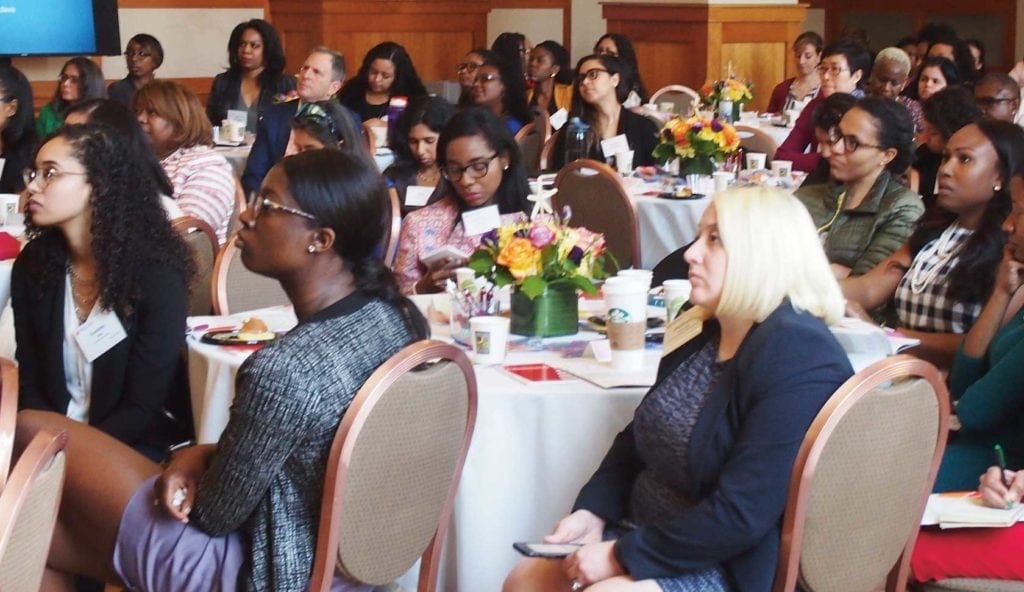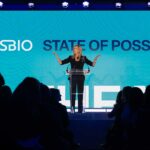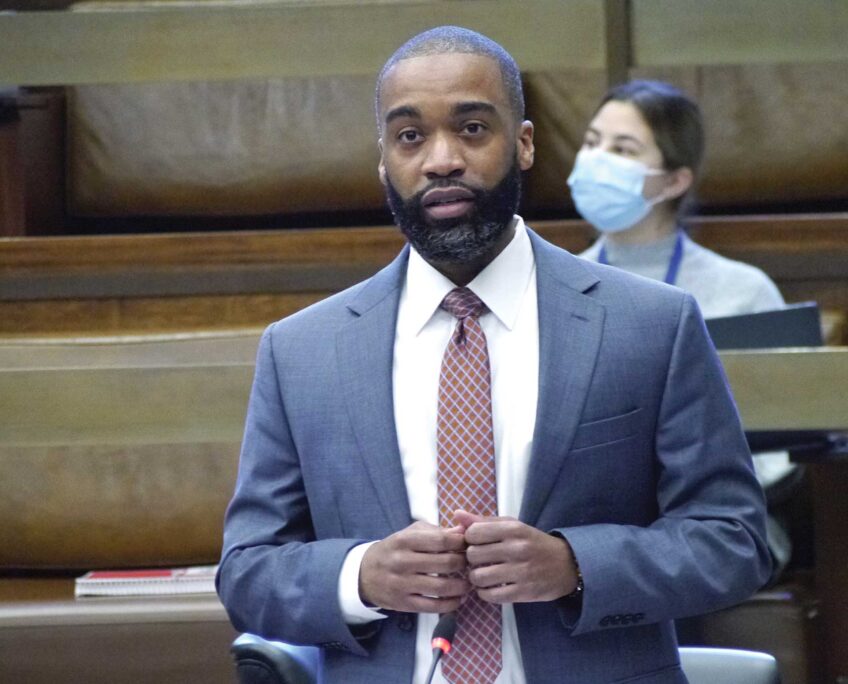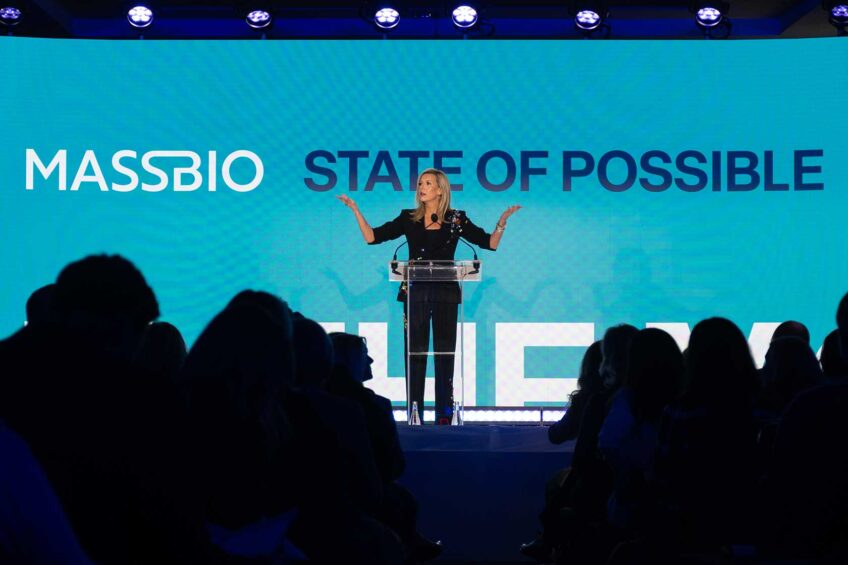
For many women professors of color, the microaggressions come from all sides — from students, colleagues and college administrators. Speaking during a recent workshop on implicit bias, a group of academics had no shortage of examples, from fending off colleagues who want to touch their braided hair to the perennial problem of students consistently rating female professor lower than males.
“I’ve had people say, ‘You don’t talk like a black person,’” said one.

Central Connecticut State University President Zulma Toro delivers a keynote address during the Women of Color in the Academy Conference. Banner photo
“People always ask me, ‘What are you doing in this discipline?’” said one South Asian professor of psychology. “They think I should be in computer science.”
The session was one of eleven held during the second annual Women of Color in the Academy Conference at Northeastern University. The conference attracted more than 200 academics, mostly from Massachusetts colleges and universities, for a day-long schedule of keynote addresses, panel discussions and workshops focused largely on the challenges facing women in academia and strategies for overcoming them.
Progress and obstacles
Women have made considerable strides in higher education, said conference keynote speaker Zulma Toro, who is president of Central Connecticut State University and a past chancellor of the University of Puerto Rico at Mayaguez.
In her address, Toro recalled being told by an advisor at University of Puerto Rico, where she earned her undergraduate degree in industrial engineering, that women lacked the competence to work in the field due to biological differences from men, and that she would have to interrupt her engineering career to get married and have children.
“This was my real life more than 30 years ago,” she said. “But I’ve spent more than 30 years in academia without interruption.”
Toro told conference attendees that women in academia are still seen as less competent and less deserving than their male counterparts.
“Decades of research in cognitive science tell us that gender biases slow down our advancement,” she said. “People perceive women as possessing less leadership ability than men.”
Toro recounted her own experience entering a classroom for the first time at Georgia Institute of Technology, where she earned her PhD, only to be berated by the professor.
“You need to leave this classroom because you are a Latino woman, and there is no room for you,” she recalled the professor saying.
“You should know that I did not leave the room,” she said, adding that the professor passed her, but graded her unfairly.
That pattern followed her through academia.
“I felt that at every step of the way, the odds were against me,” she said. “At every step.”
Toro noted that the landscape in academia remains tilted toward male leadership. Of all college presidents, only 30 percent are women. Of the 5,300 colleges and universities in the United States, just 17 are headed by women of color, according to Toro. And just 13 percent of tenure track faculty in the United States are women of color.
She exhorted attendees to share and find strength in their own stories.
“The only thing that separates women of color from anyone else is opportunity,” she said. “There is a very important role to play for individuals like you and me. We need to use the power of our stories to tear down the barriers that are slowing us down.”
Implicit bias explored
The panel on implicit bias focused largely on microaggressions — verbal or behavioral hostile messages aimed at members of a specific group. For many women who work as professors, those microaggressions can be detrimental to professional advancement.
Workshop hosts Northeastern Associate Dean Ellen Cushman and Alexia Ferracuti, associate director of the Center for Advancing Teaching and Learning, used an analysis of data from the Website “Rate My Professor” to show how women are rated lower by students. Using search terms including “competent,” “funny” and “expert,” male professors are consistently rated higher than female professors across a range of disciplines. But when search terms such as “organized” or “mean” are used, female professors consistently come out ahead of male professors.
In the analysis, compiled by Boston University Assistant Professor Ben Schmidt, women led the numbers in reviews containing the words “bad teacher” while men led in reviews with the words “good teacher.”
Understanding the biases against women in academia is key to combatting them, Ferracuti said.
“We have to honor the fact that biases exist,” she said. “Implicit bias comes out through micro-aggressions.”
To help academics deal with people enacting microaggressions, Cushman and Ferracuti offered a framework they call Observe, Think, Feel, Desire. Using the example of a participant who is struggling with colleagues who ask to touch her hair, Cushman suggested a way to observe the interaction.
“I notice you’re fascinated by my hair,” she said.
Audience members helped with the other components of the Observe, Think, Feel, Desire technique, trying their hand at ways to talk to the hair-toucher using the framework.
Think: “I think you mean to compliment me.”
Feel: “I feel personally insulted that you want to touch my hair, and I wonder if you would feel the same.”
Desire: “I would like to know why you think you can ask me that.”
One participant questioned the efficacy of the framework, saying she would prefer to go straight to the “desire” component.
“Why should I have to work through observe, think and feel?” she said. “It’s not going to make me feel good.”
Cushman acknowledged the difficulty of using the framework in everyday interactions.
“I would not practice this in everyday interactions,” she said. “The onus to change shouldn’t be on us.”
But she noted that many women of color in academia can’t say always what’s on their mind.
“Some of us don’t have that luxury,” she said. “Some of us are on year-to-year contracts, and student evaluations matter.”
The conference model
The Women of Color in the Academy Conference was modeled after conferences organized at other universities geared toward empowering women.
“We wanted to emphasize concrete strategies, rather than think theoretically about what it means to incorporate women of color into the academy,” said conference chair Nicole Aljoe, a professor of English and African American Studies. “We wanted to give people strategies they can use that will help in their career trajectories.”







